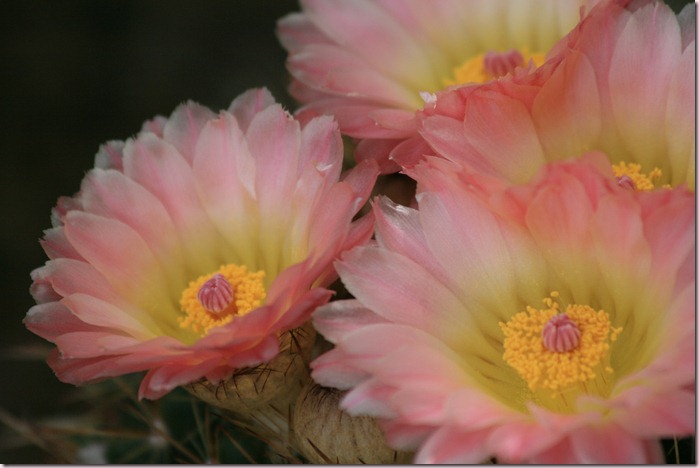Howdy and welcome to my new blog! I realized the other day that I have been messing with cactus my whole adult life-which would be 45 or so years, depending on when my behavior could be considered adult!-and the attraction just keeps on growing. My kids exchange knowing looks behind my back and whisper that it is an illness, my compulsion to drift toward the cactus and succulent displays and nurseries wherever we go, and then mutter aloud that there is nothing left to buy, I already have all the cactus in the world.
Oh, no, no, no, no! I haven’t even scratched the surface, even with the more than 100 varieties I catalogued the other day. And that was just those in pots, the tender ones that will freeze and have to come in for the winter. That brings up something I will pass along to you new collectors: save the name tags! In the beginning, I did not, thinking I really wouldn’t care what kind they were or that I would remember what they were. Silly me. I have seen the error of my ways, so I will be keeping up with the names and varieties of new additions. Now it is like looking for that needle in a haystack to identify some of them. I will have to say, though, ferreting out their identities has been a positive learning experience for me and great fun when I would finally come across one I had been looking for, a eureka! experience. But searching for identities with my books and the Internet is helping me know what to look for in terms of characteristics of the different families of cacti.
Those of you new to this branch of botany may not know that all cactus are succulents, but not all succulents are cactus. Succulent plants are fleshy because they have developed the ability to retain water, hence their ability to survive in desert and drought conditions. Succulents have thick, fleshy leaves and stems/branches and no spines, or stickers as most people think of them. Cactaceae, or cactus, also retain water in their fleshy bodies, but they also have spine cushions called areoles. It is these areoles, not the spines, that are the defining criterion. Then there are euphorbias, which are fleshy and have spines but not the areoles, and therefore are not true cacti but fall into the succulent family. It has been my observation that cactus spines will come off the plant and stick in your skin, whereas euphorbia spines are more rigid and do poke your skin, but don’t come off the plant. But euphorbias are another story for another day.
So if you are already a fan or are interested in finding out more about these unusual plants, I hope you will join me in the future and discover that cactus are so much more than the prickly part of prickly pear.


Glad you got this new blog launched. Enjoyed your first 3 posts.
Love the new blog! And the pictures are great!
These are all so beautiful! I can not help but think of all the work that has gone into all of this but you certainly have a great collection. Thanks for sharing.
Reblogged this on CactusFollia and commented:
wow!…